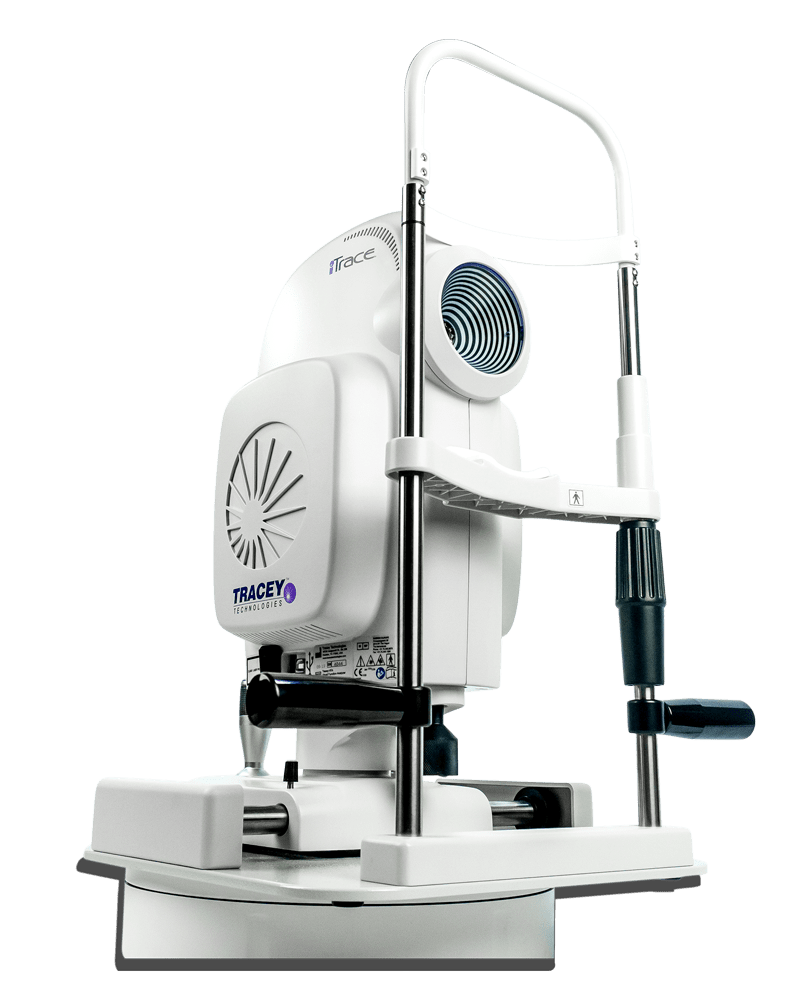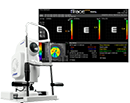How One of the Largest Private Practices in the Country is Using the iTrace to “Reinvent the Exam”
Meet Dana Ondrias, OD

We had a chance to catch up with Dr. Ondrias, who shared her unique perspective on how she and her team use the iTrace on a daily basis at Mann Eye.
The iTrace Makes Exams More Efficient
Mann Eye sees an enormous volume of surgical patients, which means that the iTrace gets a lot of use in their offices. Dr. Ondrias told us that “I would say we use the iTrace on 90% of the patients coming through our practices.”
As a practice administrator who also sees patients herself, she’s always looking for ways to improve patient flow without compromising on results and outcomes, and in her opinion, the iTrace is close to the perfect device for this. “We’re always looking at ways to reinvent the eye exam and be more efficient on everything, whether it’s screenings for cataracts or LASIK, primary care, glasses, contact lens fittings, — all those types of things. So, from our standpoint, this machine makes us even more efficient.”
When patients have their scans in one of Mann Eye’s satellite offices, data from the iTrace is automatically shared between locations, making the process smoother overall. “When they have been diagnosed with a cataract in one of our outlying offices, and then come in to have the surgery done, the iTrace data is already there so the surgeon doesn’t have to wait to look at it — they’ve already got that piece of information.”
The iTrace Simplifies Patient Education
The ability to use displays on the iTrace to educate patients is one of the device’s greatest value points because it allows the patient to be more confident in what they’re being told during the exam. Dr. Ondrias told us this is especially important when the recommendation that patients expect isn’t the same as the one they’re given by the doctor.
“For example, we use it when patients come in thinking they need a LASIK enhancement, but you can look at the Dysfunctional Lens Index (DLI) screen with them and say, ‘really, an enhancement of LASIK isn’t what you need right now — we really have a dysfunctional lens, so we need to look at replacing it.’”
The iTrace uses a Snellen “E” to represent each of the internal, corneal, and combined vision, separately, showing patients a realistic depiction of their vision, and how a toric lens will improve it after surgery if they have astigmatism. She said that by using this to show her patients what their vision could be she has seen patients become more excited for their post surgery vision.
“Before this, all we really had was corneal topography. There was a long conversation about astigmatism, and I don’t think they necessarily cared. It was really less about ‘what is astigmatism’ and more ‘what does it mean for me,’ so it was a whole lot easier after we got an iTrace to say ‘Wow, we have to correct your cornea for astigmatism, or your vision is going to look like this.’”

The iTrace: Not Just for Ophthalmology
An optometrist herself, Dr. Ondrias frequently lectures to other ODs about why the iTrace is a sound investment, even at practices where cataract surgery isn’t performed. The use of the DLI display allows optometrists to manage their patients’ vision and co-manage more cases in which cataracts become severe enough to warrant surgery.
“I tell them, ‘If you see somebody with a cataract, you bring them back every six months, not annually. You need to watch the DLI because as soon as you see that vision change, they’re going to be in my chair and not your chair. Ultimately that’s not what you want — you want to be the primary caretaker of their vision.’ With an instrument like this, ODs have the information to make that patient think, ‘whoa, I’m coming back here.’”
Make the iTrace Your Practice MVP
Dr. Ondrias’ story is yet another example of the way the iTrace can be adopted and integrated into ANY practice and used in a variety of different ways to improve decisions before, during, and after surgery. Are you ready to learn how the iTrace can work for you? Click below to schedule a demo or request more information today!

